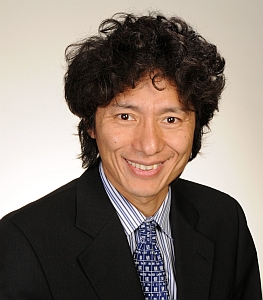Chemists at Scripps Research Institute in La Jolla, California have developed new techniques they say make it easier to manipulate organic molecules in drug compounds and other chemicals. The team led by Scripps chemistry professor Jin-Quan Yu published its results this week in the online issue of the journal Nature (paid subscription required).
Yu, with Scripps colleagues Tian-Sheng Mei, Gang Li, and Dasheng Leow (now at A*Star in Singapore), devised a process for the removal of a simple hydrogen atom from the carbon backbone of an organic molecule, and the replacement of that hydrogen atom with a functional chemical group. Traditional methods for this process, known as CH activation, can modify only the existing functional chemical groups in a compound. The techniques introduced by Yu and colleagues can give a compound new properties and support more complex structures.
Current CH-activation processes have been useful only against CH bonds that are close to a functional group and can be easily accessed on an aromatic hydrocarbon’s carbon-ring backbone. Aromatic hydrocarbons are those with with one or more benzene rings, and are among the simplest of the benzene compounds. One example involves the use of the element palladium that can attach to an existing functional group on a chemical at an angle that puts the palladium in position to sever a particular CH bond nearby, making it possible attach a new functional group at that site.
The Yu team’s methods address organic compounds where the CH bond is far from the nearest functional group, or in a position that is hard to reach for severing. In the current study, the researchers use a chemical structure for delivering palladium to a site some 12 bonds removed from the nearest functional group. The structure has the right length and angle of delivery to avoid touching other bond positions.
The team used the technique to modify several compounds, including the amino acid phenylalanine and the neurotransmitter-mimicking drug baclofen, used as a muscle relaxer and treatment for symptoms of multiple sclerosis. “These are from compound classes that chemists use routinely to synthesize new candidate drugs and other useful chemicals,” says Yu.
Yu plans to collaborate with the pharma company Bristol Myers Squibb to apply the techniques in drug development and manufacturing.
Read more:
- GSK Licenses Nanotech Product Development Platform
- Synthetic Platelets Developed for Therapies, Diagnostics
- NIH, Eli Lilly to Partner on Drug Effects Profiles
* * *


 RSS - Posts
RSS - Posts
You must be logged in to post a comment.